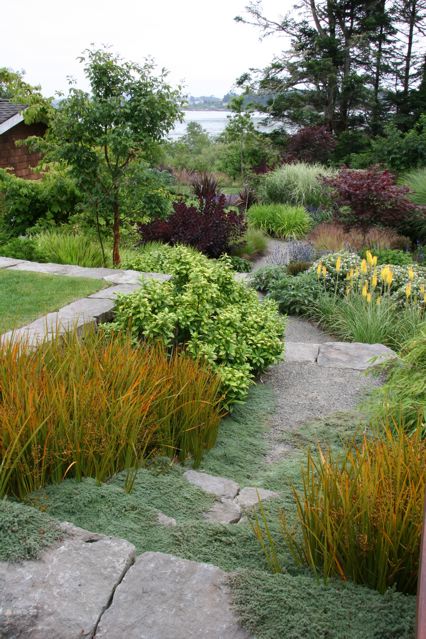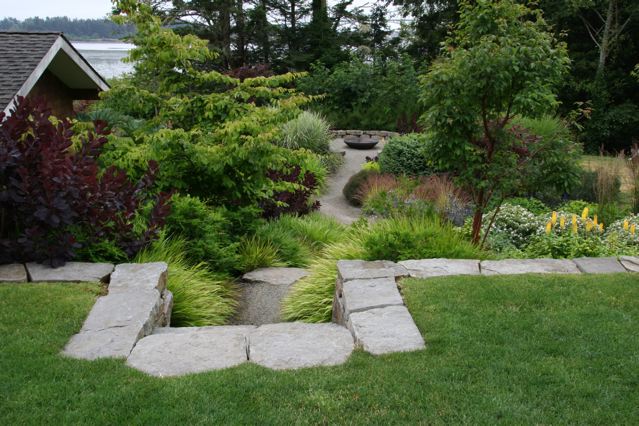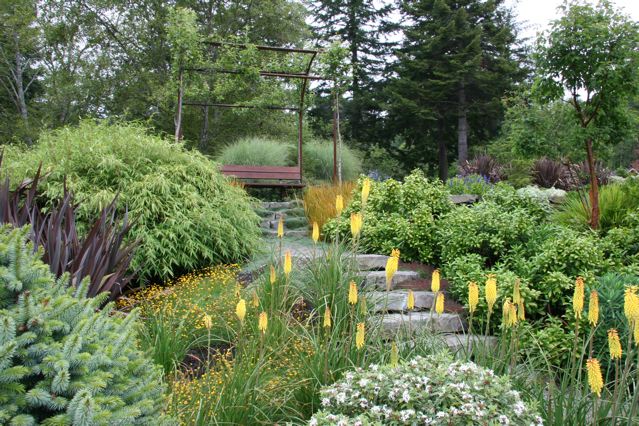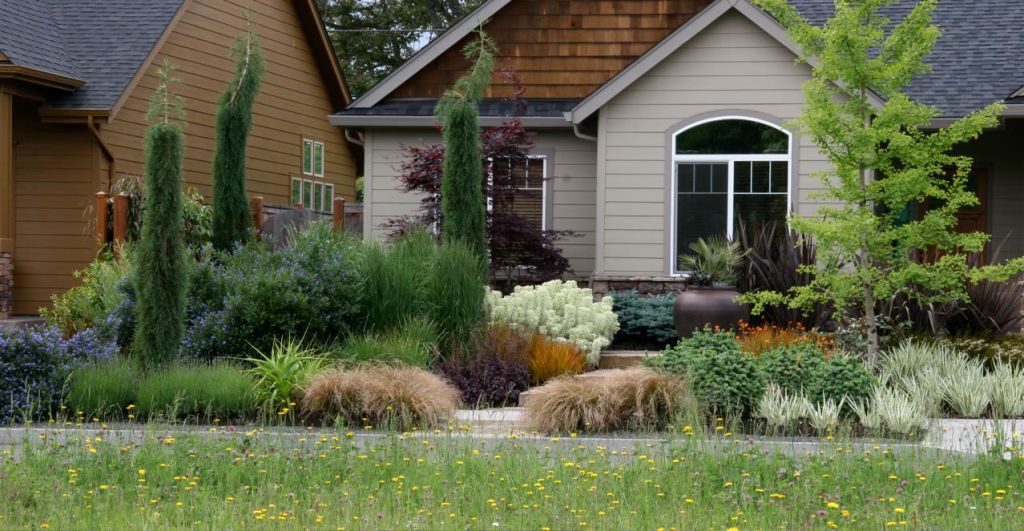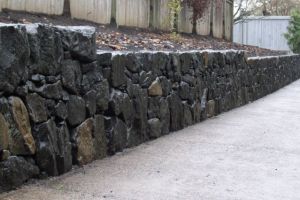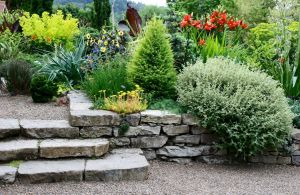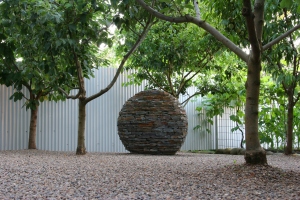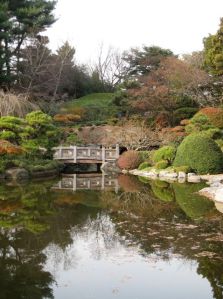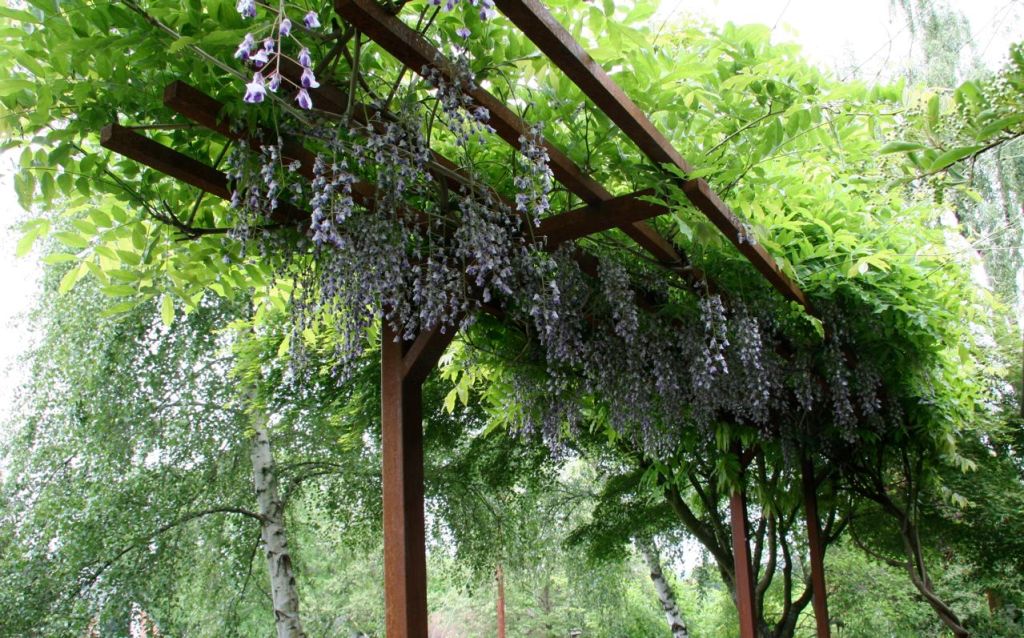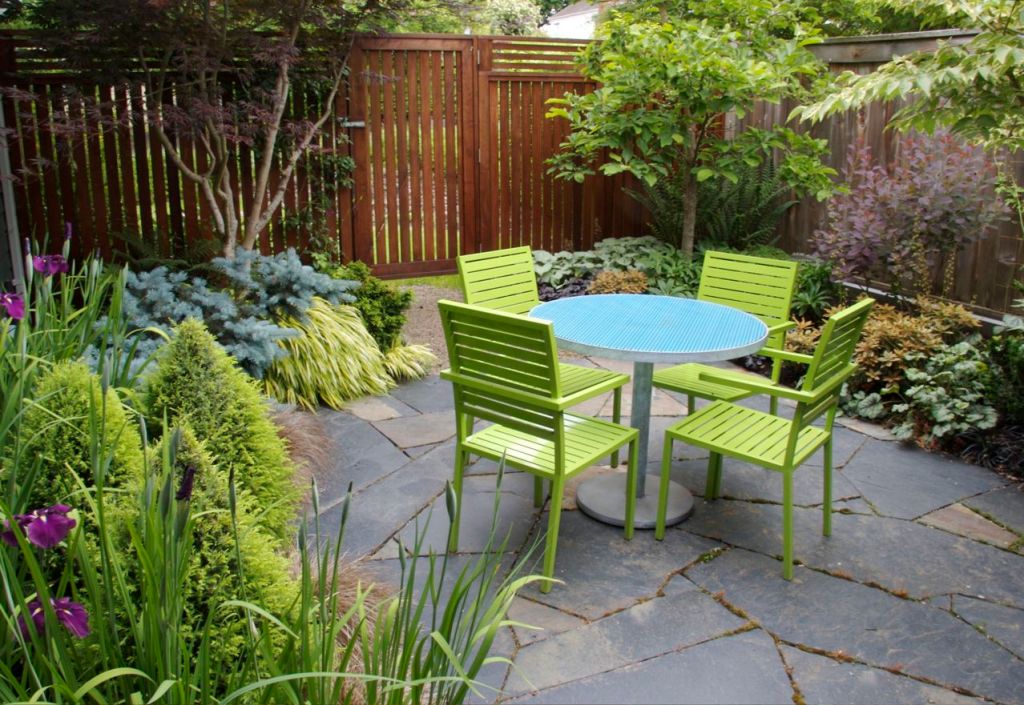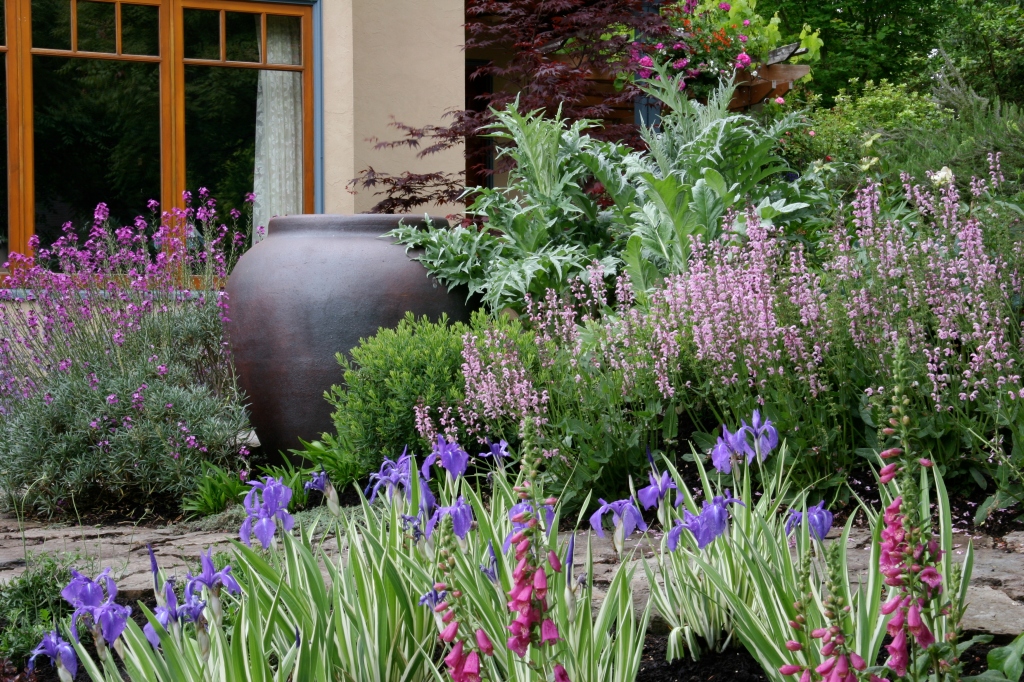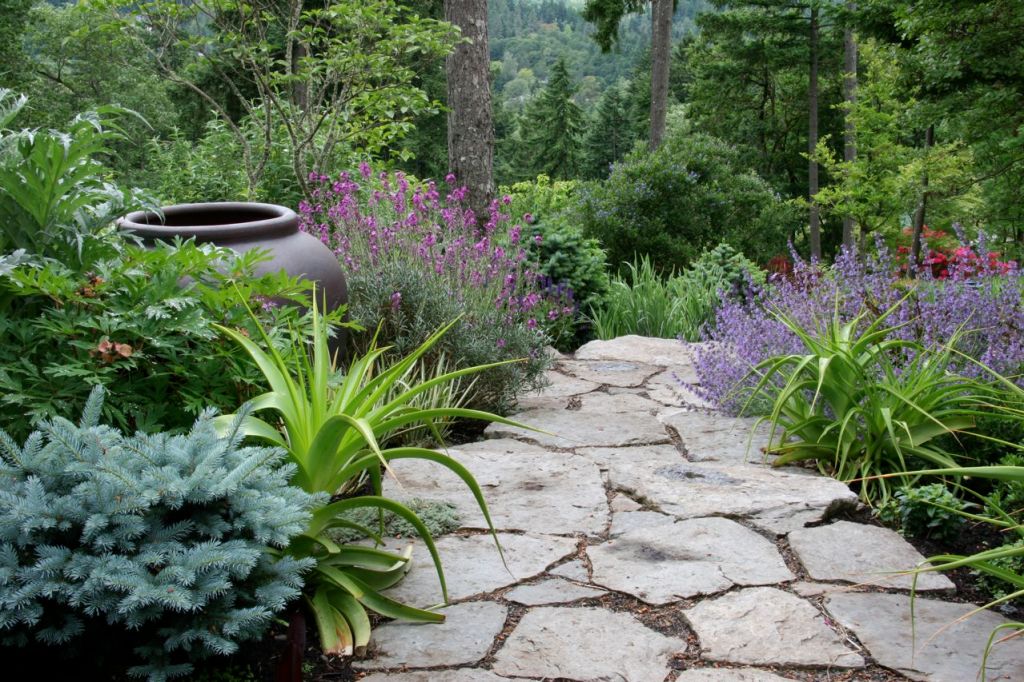Our friend Ginny is moving into town from her fabulous garden and farm in Creswell. In terrific news for garden treasure hunters, Ginny is having a huge yard/garden sale tomorrow, Saturday, May 14, to help her pare down and prepare for her urban space. Containers of all sizes! Furniture! Useful and pretty things! Ginny has great taste, and the perfect addition to your garden may be waiting for you in Creswell. If nothing else, it's a great excuse to see one of our area's best gardens. Part of the proceeds benefit the Lane County Master Gardeners. More information below.
The Plant Sales Are Coming!
 It's that magical time of year again, when the best specialty nurseries in Oregon flock to Eugene for a one-day plant extravaganza.... On May, 7, grab your mom for a Mother's Day Eve outing and find your new favorite plants!
It's that magical time of year again, when the best specialty nurseries in Oregon flock to Eugene for a one-day plant extravaganza.... On May, 7, grab your mom for a Mother's Day Eve outing and find your new favorite plants!
The Willamette Valley Hardy Plant Group sale is in the Auditorium Building of the Lane County Fairgrounds from 9am-2pm. More information here.
The Avid Gardeners Plant Sale is also 9am-2pm (where to go first?!?) at Alton Baker Park. More information here and on their cute poster at right.
Plant group members and potential members, take note - volunteers get first dibs on plants, so pitch in!
Sunset Garden Anywhere!
Just saw a big photograph of Joanne and Peter Alba's garden in Sunset's Garden Anywhere!, a "bookazine" that will be on store shelves until early June (I found it at the Woodfield Station Market of Choice). You may remember the Alba's garden from this post about their photo in the April '08 Sunset, or this post about gardening with deer. Cool!
Sometimes these photos catch us by surprise. If you know of a photo of our gardens that's not mentioned on our press page, please let us know where you found it, so we can spread the word!
Q&A - Birch Tunnel
Have a question? Want more frequent updates? We’d love to hear from you! Read more here and write us in the comments or at mosaic@mosaic-gardens.com.
Last week, Brooke left a very nice comment and a couple of good questions:
I am in love with the birch tree tunnel -- how beautiful! What type of birch trees are those? What is the system that is holding them up? How would one go about replicating this amazing design?
The trees are good old Betula jacquemontii, or Whitebarked Himilayan Birch, a fairly common landscape tree in our area. In this shadier area of the garden, we wanted the trunks of the trees to stand out, and this birch had both the eye-catching light bark and the tolerance for cool, moist (but well-drained) soils that we needed. We should note that this is the first time we've used this tree for this application, so it isn't yet "proven," but, as you can see, so far so good!
The structures are round steel tubes that we had bent to a specified radius. Believe it or not, there are shops dedicated just to bending metal! If you wanted to replicate an arch like this, you can talk to a pipe bending company or you may have better luck a local metalworker who can oversee the project for you (most pipe benders are not accustomed to working with homeowners). Alternately, you may be able to carefully fabricate a supporting structure from a smaller diameter metal, such as rebar, but it is very difficult to get and keep a perfect curve and straight sides. No matter what your method, be sure to make the "legs" of your arch extra long, in order to sink them below grade in concrete.
Design-wise, this is obviously not a new concept. For centuries, landscape designers have understood the power of focusing attention with geometry, and our take on the allee is nothing new. When considering a feature with this aesthetic weight, it is vital to get your lines just right. Make sure your "tunnel" is straight and centered, and carefully consider the views or focal points at the ends.
This is our only allee, but the balance of soft and hard lines in a metal arch can create a striking effect in many spaces. Below are a couple more photos of arches we have created. If you missed it, you can get another view of the arches in our last post.
Thanks for the questions, Brooke!
Q&A - photo request
Have a question? Want more frequent updates? We’d love to hear from you! Read more here and write us in the comments or at mosaic@mosaic-gardens.com. Our last post prompted a great comment from Jennifer:
"I check out garden blogs mainly for the pictures – the more the better!"
Point taken! It's a bit early and rainy for great new photos of our gardens, but your words will inspire us to start shooting sooner rather than later. For now, we hope a scroll through this link to some of our biggest and best photo posts might bridge the gap. And, thanks to Jennifer, here's a view of the coast garden we haven't yet shared. Enjoy!
Mosaic Journal 2.0
Hi there,
2010 was a fun, busy year for Mosaic. Unfortunately, the regular newsletters and frequent journal entries fell by the wayside. Each post takes a lot of thought and time, two commodities that can be in short supply when we're both working full time in the field. We'd like to find a way to get things moving again, so we have a proposal for you: you ask, we answer. Do you have a question about a plant, a previous post or a design concept? We'd love to hear from you! You will give us a topic or starting point (often that's the hardest part), and you and other readers will get new ideas, information and a picture or three.
We'll continue to post new photos and news, but we hope you'll help us keep the content fresh and interesting for everyone. Just post a reply below or send an email, and we'll get right on it. No question too small. Deal?
If you want to hear from us, but don't have a question in mind, here are a few questions from an earlier Q&A to get your juices flowing. If that doesn't do the trick, a quick scroll through our archive or our newsletters may pique your curiosity.
We look forward to your questions!
Rebecca & Buell
PS Email subscription (in the box at right) is a great way to keep up with our irregular posting schedule. You'll get a message from wordpress for each new entry and no spam from us. : )
Bigger and Better Coast Garden Photos
The Gregory Garden (and house) are for sale
Our friend and client Joy Gregory is moving out of town, and her wonderful North Eugene house and garden are for sale. We are sorry to see her and her awesome son leave Eugene, but we have no doubt that they'll take their new home by storm. We wrote the garden in our first newsletter, and you may remember the garden from Sunset, the Register-Guard or Pacific Horticulture (you can find an article or two on our press page).
If you happen to be shopping for a great house, neighborhood and garden, take a look!
http://www.remax.com/homes-for-sale/OR/Eugene/10060366-MLS_Number/
Coast Garden Snapshots
We took a few photos of the S. Oregon coast project while working down there this week. It's coming along! Hope to get some portfolio shots soon. Click on the images for a closer look. [gallery link="file" order="DESC" orderby="title"]
Rock On: Stone 101 - Mosaic Newsletter #9
Happy July! It's a busy time of year for Mosaic, but we've managed to add quite a few ideas and photos to the journal since the last newsletter. We discussed everything from our visit to the Ruth Bancroft Garden, to selecting containers for planting, to gardening with feathered and furry friends in mind and much more. Be sure to scroll through the journal when you're done here!
Stone is an essential element in much of Mosaic's work. One of our main reasons for being a design/build company is the intricate connection between form and function, and nowhere is this more important than in stonework. This newsletter shares some of the lessons gathered in years of working with stone. Whether you're an aspiring DIY stonemason or looking for the right pro to help build your hardscape, we hope this article will bring some inspiration and direction to your search.
Stone Design and Selection
When designing a garden, setting the overall layout of the hardscape is our first priority. Whether we're creating scaled drawings or just hand-waving, we seek to create a unified plan that balances the desired feeling of the garden with the limitations of the site, such as grade, dimensions, and relationship to the house. We try to design an entire space, say a front yard, at once, even if we only intend to build a portion of it immediately, so that we can be sure that the first phase ties into the following phases. We save all materials decisions until everyone is happy with the overall layout of paths, patios, walls and borders.
Once the general design has been set, decisions about which stone to use often fall into place. Aesthetic preferences play a big role, but the stone's desired function comes first. On important pathways, we generally select a very flat stone, with few surface irregularities to catch high heels or make less able visitors uncomfortable. A stone with a regular surface is a good choice for most patios, as well, as it is easier to de-wobble tables and chairs on a flat surface than one with more bumps and dips. Of course, a rougher stone can a beautiful choice for many spaces. In some gardens, we use a rougher stone in secondary paths, and a flatter stone for primary entrances and paths. If your heart is set on a rougher stone look, there may be a way to use it if you're careful in selecting, laying out and setting each stone. In our garden, we wanted to find a single type of stone from the Pacific Northwest that could be used for paths, walls and stairs - a tall order! At the entrance to our garden, we have a very few steps of the slightly rougher basalt that we chose, but we hand picked the best possible stones for each step.
While a stone may look perfect in photos or at the stoneyard, no natural materials just fall into place, and some are a major challenge for a novice stonemason. Regularity of shape and surface, workability and average size vary between varieties of stone, and each characteristic presents its own challenges and opportunities. Average size is a good example. Small stones are easier to move, but they are more difficult to stabilize. Discuss your options with the knowledgeable folks at your stoneyard. Be honest about your skill level, the amount of time you can dedicate to the project and the tools you have or are willing to rent or buy (some stones can only be cut with a big, heavy, gas-powered wet saw - not for the faint of heart!). Don't be offended if they suggest that you consider a man-made product, as those options are quicker, lighter, and all-around easier for the first-timer. That said, we've seen some pretty darn good natural stonework by amateurs who were willing to dedicate the time and attention to detail their stone demanded.
Once you've taken function and ease of construction into consideration, you may still have a few stone options for your project. Color is an obvious consideration, but don't forget to consider other attributes, such as the regularity of the pattern, the general size and texture of the stones, and the materials and colors of surrounding features, such as your house.
Goals
"When I start building, I don't set out to make a beautiful wall. My intention is a lasting structure. Throughout the day, I apply my efforts to the basic principles of drystone construction. If I follow them successfully, I'm likely to leave behind a pretty good-looking wall." - Dan Snow
In our opinion, really good stonework has a few recognizable attributes. If your work (or the work of the contractor is considering) shares these characteristics, you're probably on the right track:
- Base - Every stone project requires a solid foundation. In most cases, several inches of compacted sharp gravel is a good start, but discuss options and additions for your particular stone project. We often spend hours preparing our site before we lay the first stone, from setting the grade to excavation, moving base, grading, compacting, grading, compacting.... There is an unfortunate proliferation of "expert" advice floating around that claims you can more or less plunk stones on essentially unprepared soil. Ahem. Don't. Unless you're just not interested in the long term longevity of your work, do the base work.
- Careful layout - String lines are your friend. They make sure that your straight lines are actually straight, keep you at the right grade, and make for impeccably level walls. Make sure that water runs away from any structures and that the slope of your paths or patios are appropriate for their purpose.
- Tight gaps - We know of no better visual indicator of quality than consistently tight gaps in stonework. By taking the time to shape and place stones so that they leave little room between them, you lock the stones in place, creating a longer-lasting, stable product that is pleasant to walk on and beautiful. There are moments when a "stepping stone" effect can be nice, but we reserve this option for infrequently traveled areas.
- Stability - The wobble test. Even the best stonemason may have to re-stabilize a flagstone or two after their work is done, but the vast majority of stones should not move underfoot. Borders and the top stones of walls should also be firmly set.
- Dry setting - We rarely use mortar in walls and never in laying flagstone. Any good stonemason's work, mortared or not, is grounded in careful dry setting technique. Sometimes using mortar is preferable or necessary, but good, stable stonework should still be the foundation of your project.
- Time - The variation that makes natural stone so beautiful also demands thoughtful, sometimes slow work. Each stone requires a different approach, with an eye towards not just fitting into its space, but making the right platform or hole for the next stone. The rewards come slowly, but they do come, and, in the long run you will be happier with a well-built project than a quickly built one.
(Re)Sources
Dan Snow, the New England stonemason quoted in the "goals" section above, offers a much better and lengthier source for "how to" information than we can provide in our journal. His book In the Company of Stone is both a gorgeous collection of stonework photos and an invaluable resource. If you have a moment, check out his website and Flickr stream for lots of neat process photos.
We can't recommend Lane Forest Products highly enough. They are a great source and resource for your stone projects, and they offer a great selection of materials for any project. Their stone yard crew is pleasant and professional, even in scorching heat, and we're always happy with the quality of their products.
Last, but, we hope not least, we've put a small sampling of Mosaic's stonework and a slideshow of the construction of a dry stack wall (rerun from this post) below. See if we measure up to our own standards! Click on the images in the gallery for a closer look.
[gallery link="file" columns="4" orderby="title"]
[slideshow id=3458764513843874476&w=426&h=320]
It's Hot.
Phew! Yesterday was a scorcher, and it looks like we're in for another hot day today. The plants are a little shocked, but we wonder if the long, slow early growing period might have toughened them up a bit. While we wait and see, here are three tips for beating the heat... in your garden, anyway:
- A quick blast of water in the heat of the afternoon cools the plants and hardscape down a bit. With our cool nights (ahh, those cool nights), we only have a few really broiling hours, and a little cooling can go a long way towards preventing burned leaves and miffed plants. It's still best to do your main watering in the early morning, but a couple of minutes of well timed water in the afternoon can be a big help.
- Plant a few summer performers that actually enjoy a little heat. These plants may take awhile to come on strong, but they love the weather we're having right now, and will thrive through fall. One annual we love is Solanum pyracanthum - a sort of mean-looking spiky tomato.
- Resolve to work towards a lower water garden. Drought tolerant plants tolerate heat better than their hydrophilic counterparts, and you don't have to water them every day in a hot spell to keep them from collapsing completely.
Enjoy the heat, if you're a heat lover, and happy hiding if you're not! We're still working on your newsletter. We're sharing some tips and ideas for selecting and working with stone, and we think it will be worth the wait.
In the Doghouse (Or, Speaking of Catios...)
We were just talking about this! We ran across an article about this cool, contemporary, pet-friendly space designed by Anderson Anderson Architecture. We love the low impact of pre-fab construction and we're thrilled to see it cropping up in unexpected places, but this house's indoor-outdoor pet spaces deserve a longer look. What they call "chain-link" looks like its more attractive, geometric cousin, welded galvanized wire, to us. Again, the article emphasizes the benefits of containment to the pets, but we bet the local wildlife doesn't mind too much....
We also love the quiet, let-it-be landscape (much easier with pre-fab). Why mess with a good thing?
Fired Up for the 4th
We are working on a newsletter for you, but in the meantime, we thought we'd post a couple holiday-appropriate shots of our grill. We built the stone and interior fire brick and designed the custom metalwork. Although it would work with commercial, bagged fuel, we think oak and fruit wood make for the best flame and flavor.
When it's not in use, the simple lines and intricate stonework make the grill right at home in our garden.
.
Dog Gardens and Catios
Like many of you, we love our garden and we love our pets, two big mutts, Moso & Faro, and we know that it can be hard to find the right balance between freedom for the dogs and a tidy, happy garden. When designing spaces for other dog-lovers, we sometimes include a separate fenced area for the pooches. The separate area to romp and... take care of other business... keeps the dogs contained and the plants free from pee-burn, trampling and munching (even well-behaved dogs *love* ornamental grasses). There's no reason to give up on good design in a dog area, however. Our dog run doubles as an orchard, and we grow grapes on the bull wire fence that separates the space from the veggie garden. The pea gravel is easy to clean, and it doesn't track in on wet paws.
So far, we've only designed "dog gardens," but judging from this New York Times article and slide show, we may get a chance to design a "catio" one day. We find some of the enclosures in the photos a little aesthetically overwhelming, but we're sure that there are more subtle options. While the article focuses on the benefits for the cats, there are advantages for birds and other native wildlife, as well.
What do you think?
Studies in Texture at the Bancroft Garden
Our trip to Northern California was brief, but we are so glad that we made time to visit one of our favorite gardens. The Ruth Bancroft Garden in Walnut Creek, CA is a mecca for hortitexturephiles and garden lovers of all stripes. We wrote a short post about the Bancroft Garden last year, but we may not have been emphatic enough in our praise. It is magical. You should visit. Soon.
As you probably know, a sunny summer afternoon is less than ideal for photographing gardens, but Buell managed to get a number of fun shots and (we think) a few pretty darn good ones.
Enjoy!
[gallery link="file" columns="4" orderby="title"]
Bancroft Teaser
It's Succulent Day!
Buell arranged our succulent and conifer containers last night. The arrangement looks great, hunh? Finishing that arrangement feels like the beginning of summer, our garden's best season.
These little pots make a big feature at the center of our upper gravel terrace, and a strong focal point at the top of the stairs from the stock tank terrace. In many cases, we advocate using large containers to anchor your potted arrangements, but enough small containers can have a real impact. These containers range from around 6 inches to around 20 inches in height. Most of them are hand-coiled Vietnamese pots with an ash glaze, but there are a few odds and ends that we've picked up over the years.
.
..
.
Public Gardens
This weekend, Rebecca received a terrific email from her stepmom with photos of her Dad at his weekly volunteer gig in the Brooklyn Botanic Garden! Dad helped finish the new herb garden at the BBG, and he's looking forward to helping maintain and develop it for the future.
If you're ever in New York with a little time, we highly recommend a stroll through the Brooklyn Botanic Garden. It's a fantastic, huge garden with formal areas, rolling park-like sections, a Japanese garden (see my photo from fall '08) and the coolest greenhouse pavilions.
Public gardens are a tremendous asset to their communities and the larger gardening world, and we all have a debt of gratitude to the dedicated staff and volunteers who build and work in them.
While Eugene doesn't have sprawling botanic gardens like the BBG, we do have a few fun public gardens, like the Sebring Garden in Alton Baker Park. One of the largest rock gardens in North America, the Sebring Garden is now 12 years old and packed with fascinating, unusual plants. The garden was built and is developed and maintained by the Emerald Chapter of the North American Rock Garden Society. Even if you're not sure you want a true "rock garden," rock garden plants tend to be low-water, smaller varieties, perfect for many urban spaces. If you're looking for a great way to support public gardens and learn from some of our area's most knowledgeable plantspeople, volunteer a few hours in the Sebring. Or, if you just want to expand your knowledge about wild and wonderful plants, attend some of the NARGS meetings, trips and other fun events (check out this cool camping trip).
Picture Postcard Gardens
Greetings!
Our newest postcard features a few photos of our work (learn more below) and addresses for our website and this journal. If you're new to the journal - welcome! Once you've learned about the photos on the card, we hope you'll keep reading. The newsletters are a great place to start, or you can take a quick scroll through our last fourteen months of photos, ideas and news. We update every few days during the growing season, so we hope you'll check back soon.
To learn about our Mosaic-designed, 100% recycled-paper postcards read more here.
But for now, on to the pictures!
.
.
.
.
This rusting metal wisteria arbor shades our clients' west-facing seating area. We designed the steel frame to be sturdy enough to support a mature vine, but aesthetically light enough not to overwhelm the plant's beauty or the view. When the vine drops its leaves for winter or the vine is cut back hard, the arbor provides a clean and (we think) attractive structure on its own. If you like the arbor, you might enjoy this post with photos of some of our other custom metal features.
A little courtyard makes the perfect outdoor dining room for clients who love to cook. The garden is just outside their kitchen, where they spend much of their time, and screened from their semi-busy street by a redwood fence. We built the redwood fence and stone patio, installed the plants, and even designed the cool metal furniture! Learn more about this pocket garden in our 6th newsletter, Sit. Stay., where we share some ideas for designing a great seating area, and in a post about our furniture designs.
A big, hand-coiled, Vietnamese urn and rustic basalt path anchor this pretty garden. Our client requested a cottage-style planting with as much pastel floral color as her voracious deer would allow. We balanced the seasonal color with bold foliage for year-round impact. This garden has some great ideas, and we've discussed different aspects of it in a recent post about "making a scene," a newsletter about garden features, and a post with photos of three of our favorite deer gardens.
Thanks for reading! We hope the card and journal provide inspiration for your garden, or at least a few minutes of fun. If you would like to learn more about Mosaic and how we can help you create your garden, visit mosaic-gardens.com or call 541.434.6467.
New "About" Page
We just changed the text on the "about" page on our website. Check it out!








